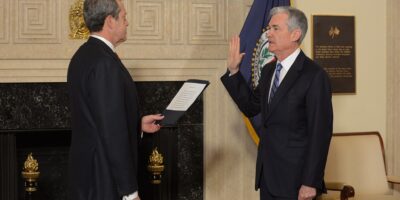Galbraith Offers a Poor Defense of MMT

Modern Monetary Theory (MMT), which claims that a country issuing debt denominated in its own currency can finance a large amount of government spending by issuing debt or printing money without worrying much about a debt crisis or high inflation rates, has grown in popularity on the political left in recent years. But it has failed to gain much support in the economics profession. That is largely due, in my view, to problems with the theory. But the poor defense routinely offered by its more prominent advocates also contributes. James K. Galbraith’s recent article serves to illustrate.
“As anyone who has ever been responsible for legislative oversight of central bankers knows,” Galbraith begins, “they do not like to have their authority challenged. Most of all, they will defend their mystique – that magical aura that hovers over their words, shrouding a slushy mix of banality and baloney in a mist of power and jargon.” Their negative reactions to MMT can be dismissed, he implies, as self-serving efforts to maintain control. After all, MMT represents what central bankers fear: a “popular, accessible, and democratic” theory.
No doubt central bankers are put off by challenges from outsiders. But it does not follow that their arguments should be dismissed out of hand. Central bankers do not have superpowers. They are not super-intelligent. Their policies should be open to critical assessment. But the fact that central bankers err does not mean MMT is correct.
Galbraith pays too much attention to central bankers’ behavior and too little to their arguments. A criticism of central banking, as currently practiced, is not a defense of MMT.
Nor need their opposition reflect a disdain for a “popular, accessible, and democratic” theory. It seems at least as likely that they are concerned with the potential downsides of MMT-inspired policies, as suggested by standard economic theory and history.
Much the same could be said about his suggestion that MMT is dismissed because “two leading advocates of MMT are women.” Is it so difficult to offer a substantive defense of MMT that one must first attempt to dismiss the opposition out of hand without ever considering their arguments? Apparently so.
The closest Galbraith comes to offering an actual argument for MMT is a brief remark about the “spring of the year 2020, when in the face of the COVID-19 collapse, the United States disbursed $2.2 trillion in fresh money to the public to enable people to spend more, thereby raising output and employment. The US economy did not have a great year in 2020,” he writes, “but it did not experience runaway inflation.”
He’s right, so far as it goes. The government spent a lot of money in a short period of time and inflation expectations remained below two percent. But that doesn’t tell us much about how such a policy would work in normal times. And the supposed evidence offered in support of MMT is also consistent with the standard view. To the extent that the fear of pandemic and government lockdown orders slowed spending, good old-fashioned monetary theory explains the observed low inflation rate in 2020.
A proper defense of MMT would not cast about for reasons to dismiss standard arguments out of hand; it would not rely on historical outliers; and it would not suggest MMT is the only possible explanation when standard monetary theory can also account for the event.
The rise of MMT on the political left will no doubt continue. It is politically expedient. It provides a justification for spending. Political expediency does not imply theoretical soundness, however. And defenses along the lines offered by Galbraith do little to assuage very real concerns.









